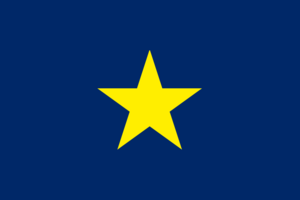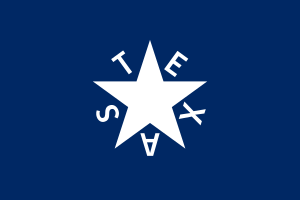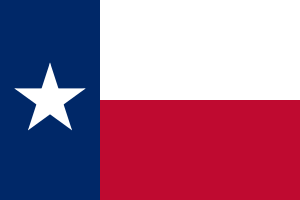Bonnie Blue flag facts for kids
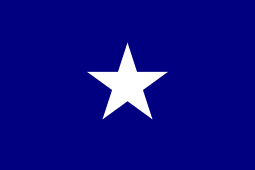 |
|
| Use | Banner |
|---|---|
| Design | A dark blue banner charged with a white star |
The Bonnie Blue Flag is a famous flag with a simple design: a single white star on a dark blue background. It has been a symbol of independence and wanting to be self-sufficient throughout history. This flag was used by different groups, including the short-lived Republic of West Florida and the Republic of Texas. It also became important at the start of the American Civil War in 1861, especially for the Confederate States of America. The first known use of a flag like this was in 1810.
Contents
History of the Bonnie Blue Flag
Early Uses of the Flag
The first time a flag like the Bonnie Blue was officially recorded was in 1810. It was used by the Republic of West Florida. This was a group of English-speaking settlers in parts of Louisiana who rebelled against the Spanish government. They wanted to be independent. They even overthrew Spain's governor in Baton Rouge. However, their independence lasted only about three months. Their land was then added to the United States, as part of the Louisiana Purchase.
The Flag in Texas
Later, a similar flag was adopted by the Republic of Texas on December 10, 1836. This version was called the Burnet flag. It had a large golden star on a blue background. It was inspired by the 1810 flag of West Florida. Some versions of the Burnet flag had a white star, looking almost exactly like the Bonnie Blue Flag. Other Texas flags from that time also featured a star, sometimes upside down. These flags helped inspire the design of the modern flag of Texas.
The Civil War and the Bonnie Blue Flag
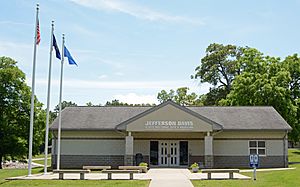
When the state of Mississippi decided to leave the Union in January 1861, a flag with a single white star on a blue field was flown from their capitol building. This flag became very popular as a symbol of independence. A man named Harry Macarthy helped make it famous by writing a popular song called "The Bonnie Blue Flag" in early 1861. Many Southern states that left the Union then used a white star on a blue field in their new state flags.
The Bonnie Blue Flag was used unofficially during the early months of the American Civil War in 1861. It was flying above the Confederate cannons that first fired on Fort Sumter. This event marked the beginning of the Civil War. Many military groups also had their own flags that they carried into battles.
In 2006, the state of Louisiana officially recognized the Bonnie Blue Flag. They passed a law saying it was "the official flag of the Republic of West Florida Historic Region." This showed the flag's connection to the earlier West Florida banner.
In 2007, one of only six known Bonnie Blue flags from the Civil War era was sold at an auction for $47,800. This flag had been carried by the Confederate 3rd Texas Cavalry. It was also shown at the 1936 Texas Centennial Exposition.
Modern Symbolism
Today, the Bonnie Blue Flag is sometimes flown by solo sailors while they are at sea. Its blue background represents the world's seven oceans. The single white star represents the single-handed sailor who is alone on the journey. This flag helps other ships and the coast guard know that the sailor is traveling without a crew.
In Popular Culture
The Bonnie Blue Flag has appeared in books and movies.
- In the 1936 novel and 1939 film Gone with the Wind, a character named Rhett Butler nicknames his new baby daughter "Bonnie Blue." This happens after another character says the baby's eyes will be "as blue as the bonnie blue flag."
- Both the flag and the song "The Bonnie Blue Flag" are shown in the 2003 film Gods and Generals.
de:The Bonnie Blue Flag



